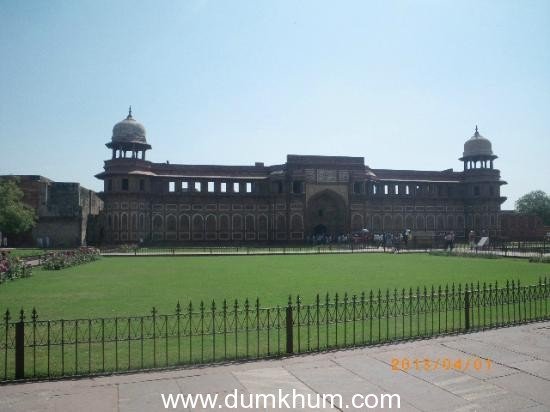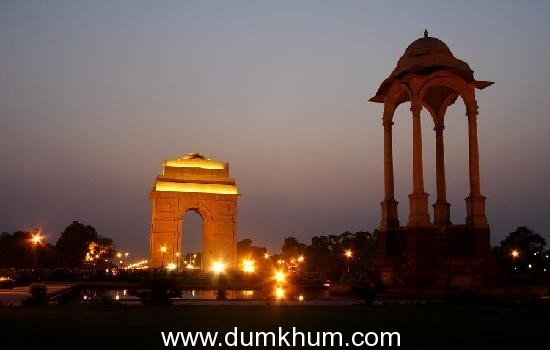Must-visit sites to reminisce India’s Independence struggle
New Delhi, As the nation celebrates India’s independence on August 15, TripAdvisor®, world’s largest travel site, has come out with a list of popular patriotic attractions ranked based on reviews and opinions from TripAdvisor travellers, closely associated with what led to the dawn of August 15, 1947- the day India got her independence. The list includes historic sites/ landmarks, places which are significant to the freedom struggle and memorials which keep it alive for generations to come.
According to an India Family travel survey done earlier this year by TripAdvisor India, it was encouraging to see that parents see travel as part and parcel of holistic learning with as many as 97% respondents saying they consider travel important for their children’s education with 70% among these claiming it to be very important. Further strengthening this trend, 67% respondents agreed that holidays should be a balance of recreational and educational experiences/activities for children.
Our recommendation is to take a step back and take your kids to these attractions for a lesson in India’s history or revisit yourself for a shot of national pride.
1) Agra Fort, Agra Agra fort was the site of a battle during the Indian rebellion of 1857, which caused the end of the British East India Company’s rule in India. It is built alongside the Yamuna river and has a unique hybrid architecture with Hindu and Islamic influences. “Magnificent piece of history!”, “trip down memory lanes of history lessons in school” are some of the ways TripAdvisor travellers have summed up their visits to the fort.
2) Gandhi Smriti, New Delhi Gandhi Smriti, formerly known as Birla House is the place where Mahatma Gandhi spent the last days of his life and was assassinated on January 30, 1948. The exhibition on the Mahatma, the room in which he lived and the prayer ground where he breathed his last, attract huge number of visitors from India and abroad.
3) Sabarmati Ashram/ Mahatma Gandhi’s Home, Ahmedabad From being called a “fakir” from the East by Winston Churchill to being recognized as a 20th Century Apostle of Peace, a Mahatma, Gandhi inspired generations after him and continues to do so. A part of his life is forever enshrined at the Sabarmati Ashram where the Mahatma stayed for 12 years. As TripAdvisor travellers say: “Lump -in-throat experience… especially if you’re an Indian. It (the Ashram) touched us all, particularly reading about the Mahatma, his quotes and his simple living quarters.”
4) Viceregal_Lodge, Shimla Perfectly crafted piece by the British, this lodge speaks of grandeur, majesty and splendid architecture. It was here that crucial India-Pakistan partition talks were held, infact the museum in the lodge reflects on Indian freedom struggle and decisions made at this place during that time.
5) Cellular Jail, Port Blair According to a TripAdvisor traveller, “the Cellular Jail is well maintained, in fact so well maintained that it tends to wipe the horrors of the place.” Indeed. For, the prison at Port Blair in the Andamans was notoriously known as the “Kala Pani” in the pre-Independence era. It was infamous for all kinds of excesses committed on freedom fighters by the British imperialists. A must-visit place to tell your kids how the path to freedom for India was long and full of hardships borne by people who gave up everything to make it possible.
6) Jallianwala Bagh, Amritsar The site that witnessed became a dark chapter in the British Occupation of India with the massacre of 1919. It was in fact after the incident that Mahatma Gandhi called for the peaceful Non-Cooperation (Satyagrah) Movement, one of the first collective steps taken in occupied India to oust the British. As a traveller at TripAdvisor remembers of the garden, “It seems like a nice pleasant garden with families walking around. After a few minutes strolling around, you begin to realize the terrible past this place has. Bullet holes can still be seen and the well with its horrible history is chilling. Well worth going to. It left a lasting impression on me.”
7) Wagah Border, Amritsar The place between Amritsar in India and Lahore in Pakistan marking the international boundaries between the two neighbours. The place is highlighted by the Army outposts on either side of massive two sets of gates and elaborate drills for the ‘Beating the Retreat’ ceremony with soldiers from either sides trying to outperform one another – a real treat to patriotic fervour within.
8) India Gate, New Delhi A monumental example of British architecture, India Gate – with its 42-metre-high canopy — is best known for its eternal flame in the memory of the Unknown Soldier (Amar Jawan Jyoti). The lush green lawns spread over a few kilometers around it and boating make India Gate a popular picnic site for Delhiwallahs. It’s a treat for the eye to see the India Gate all lit up during the Independence Day celebrations.
9) Red Fort (Lal Quila), New Delhi The Red fort or the Lal Quila as it is known locally was a monument built by the Mughal emperor Shah Jehan. The monument gives a glimpse at the architectural brilliance of the period. As for the name, it was derived from the red color of the fort. Every Independence Day, the Minister of India hoists the national flag at the Red Fort. Travellers must visit in the evening when the lawns give way to a light and sound show which gives you a walk through the Indian History.
The highlights of a visit to the Red Fort is the 58-minute Sound-and-Light Show held for six days in a week (except Monday) showcasing the history of India and Red Fort.
As a TripAdvisor traveler puts it, the Red Fort is “the historical edifice of the wonderful past gone by.”
10) Raj Ghat, New Delhi, New Delhi
Located about 13 km from Gandhi Smriti, Raj Ghatis the final resting place of the Mahatma Gandhi. A memorial in black marble, the place embodies the tenets of peace that Gandhi preached.
11) Kirti Mandir, Porbandar The temple in Porbandar – attached to the 220-year-old house where Mahatma Gandhi was born — is a memorial to him and his wife, Kasturba. Kirti Mandir upholds a principal that was close to the Mahatma’s heart – secularism. For, symbols of major religions around the world can be seen here – a veritable knowledge bank for people of all age-groups, on religions, the Father of the Nation and the long struggle that ultimately won India’s freedom.
TripAdvisor travellers acknowledge the property is “well maintained” and a “neat place to be in”, which gives a glimpse of “some very rare pics of Gandhi and things used by him”.



















